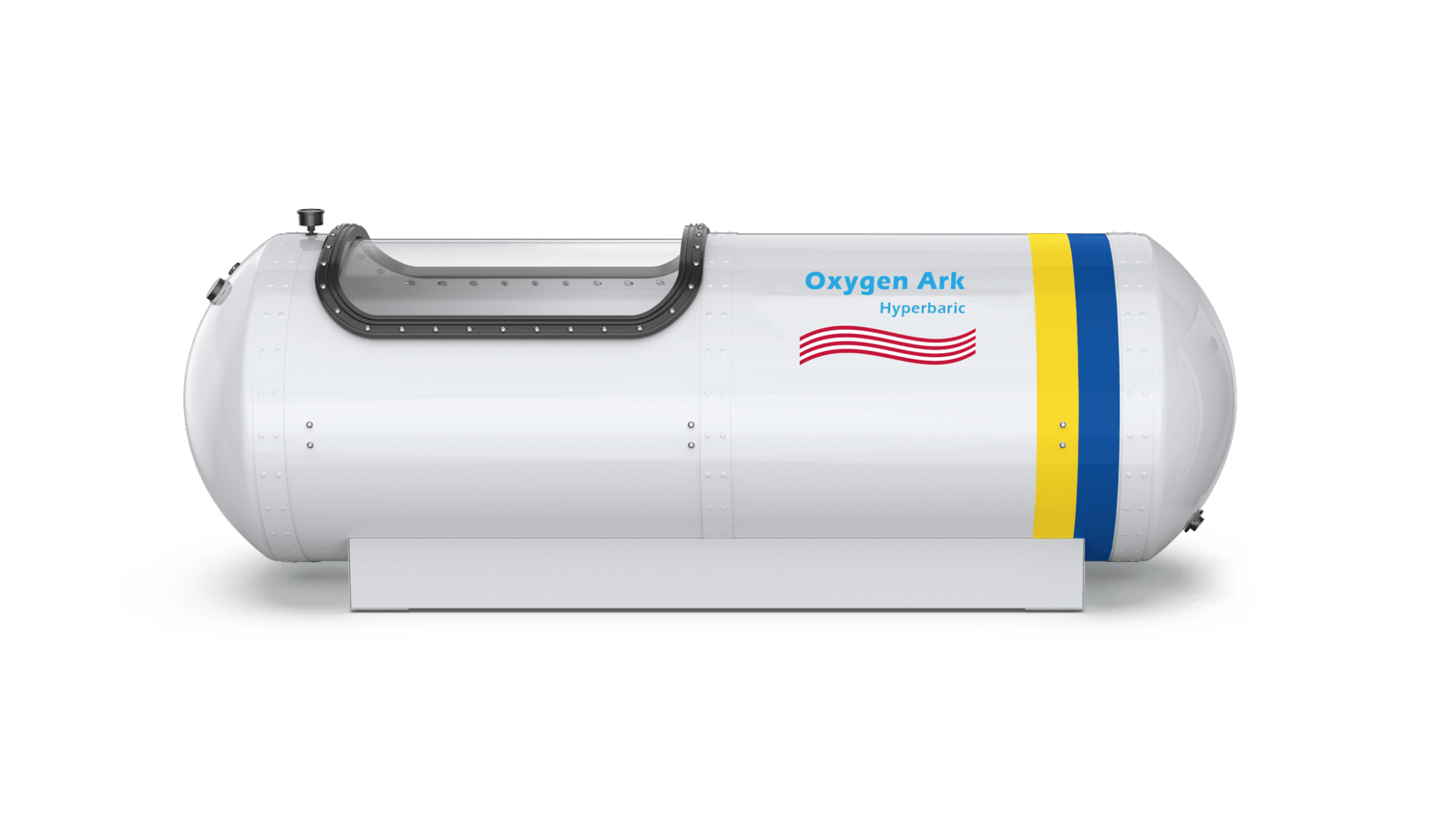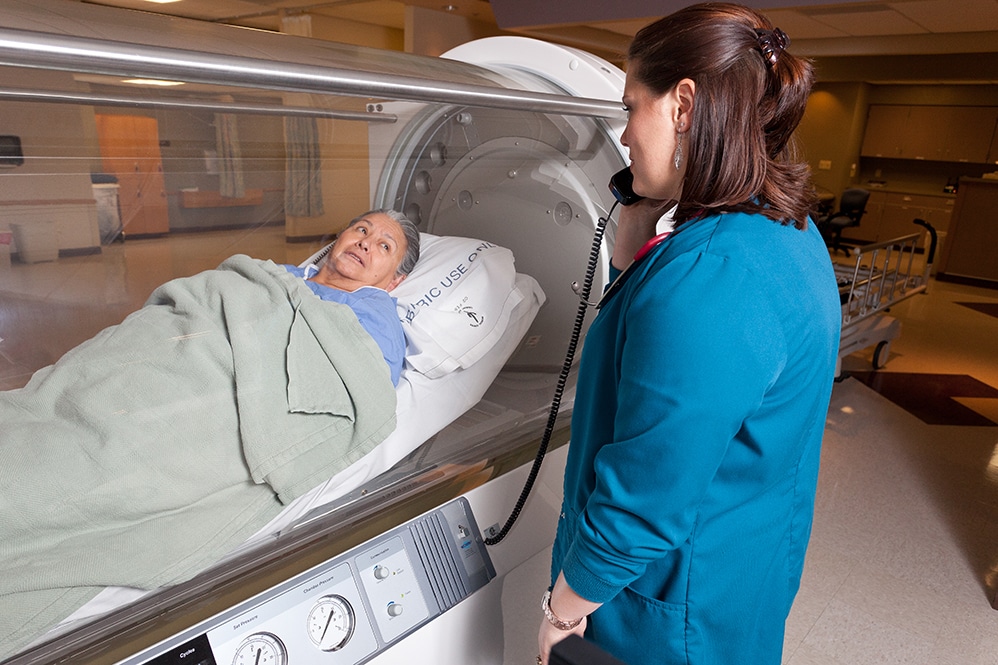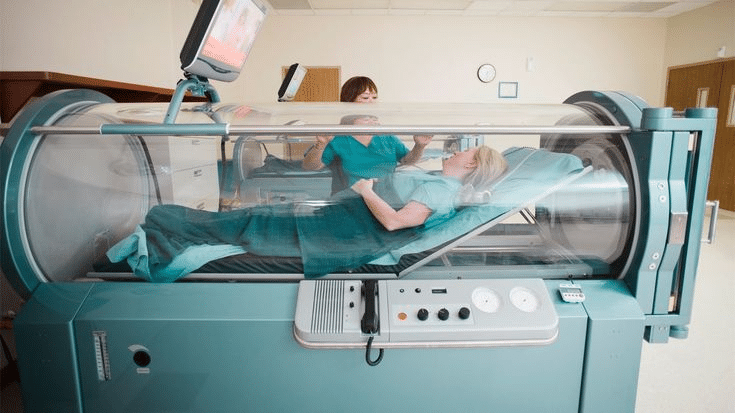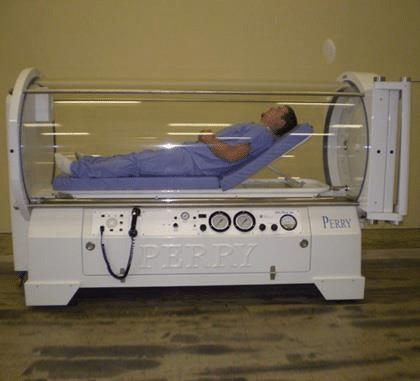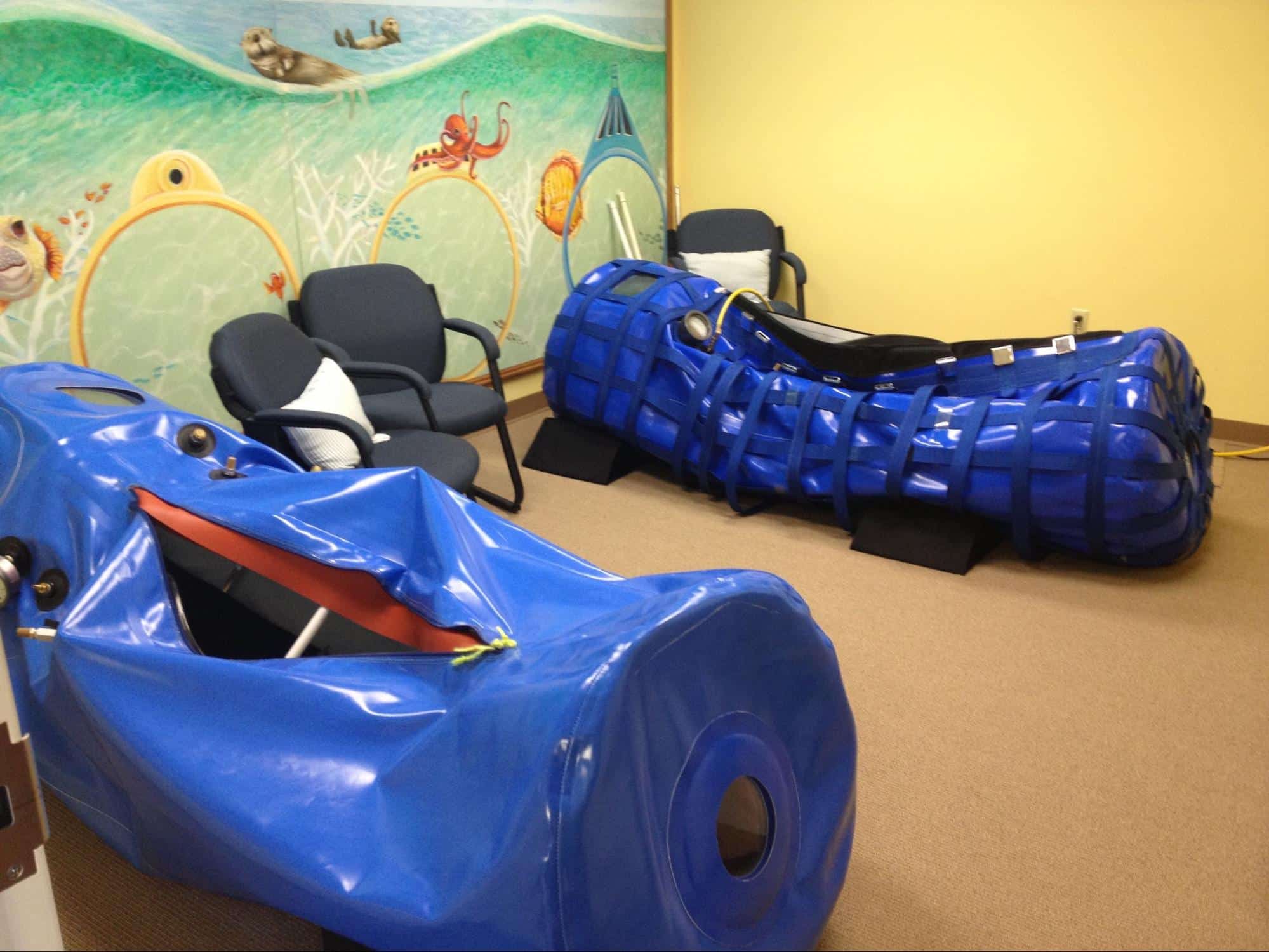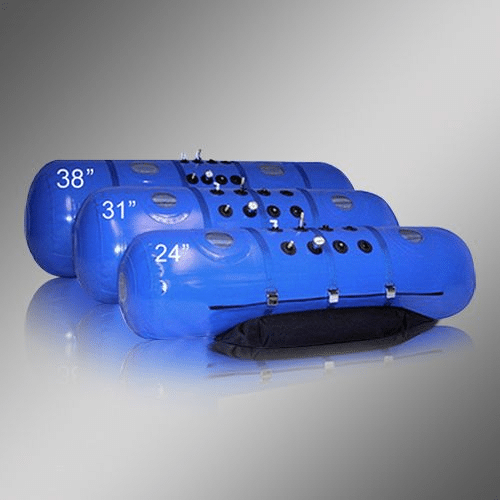
Source: Pinterest
Hyperbaric chambers are specialized medical equipment that produces a pressurized atmosphere in which patients can inhale pure oxygen. These chambers are used in hyperbaric oxygen therapy (HBOT), a therapeutic modality in which oxygen is administered at higher-than-normal atmospheric pressure. The goal of hyperbaric chambers is to enhance the flow of oxygen to tissues and organs, hence facilitating healing and recovery.
Hyperbaric chambers have grown in popularity in recent years due to their vast range of uses in a variety of medical sectors. They are used to treat illnesses such as non-healing wounds, carbon monoxide poisoning, decompression sickness, and boosting post-surgical recovery, among others. The rising acceptance of their effectiveness has resulted in more use and additional study in this sector.
Understanding Hyperbaric Pressure
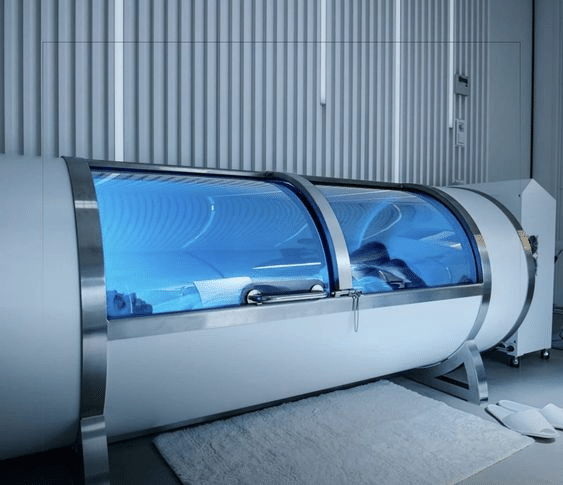
Source: Pinterest
Hyperbaric pressure refers to the heightened atmospheric pressure experienced within a hyperbaric chamber during hyperbaric oxygen therapy (HBOT). Its measurement is expressed in pounds per square inch (psi) or atmospheres absolute (ATA). The pressure within the chamber usually surpasses the atmospheric pressure at sea level, enabling patients to respire oxygen at levels exceeding the norm.
The connection between pressure and oxygen levels follows Boyle’s Law, which dictates that when pressure escalates, gas volume decreases, and vice versa. In hyperbaric chambers, as pressure amplifies, more oxygen molecules are compacted into a given air volume. Consequently, the partial pressure of oxygen rises, facilitating heightened absorption of oxygen by bodily tissues.
The physiological repercussions of augmented pressure on the body during HBOT are twofold. Initially, escalated pressure prompts accelerated oxygen dissolution in the bloodstream. This fosters enhanced oxygen conveyance to tissues, even in areas afflicted by compromised blood flow. Subsequently, hyperbaric pressure stimulates the release of growth factors and stem cells, fostering neovascularization and supporting tissue rejuvenation and repair.
Furthermore, hyperbaric pressure can yield additional effects on the body, including inflammation reduction, edema alleviation, and fortification of the immune response. These outcomes contribute to the therapeutic advantages of hyperbaric oxygen therapy and its diverse applications in the realm of medical conditions.
Components and Design of Hyperbaric Chambers
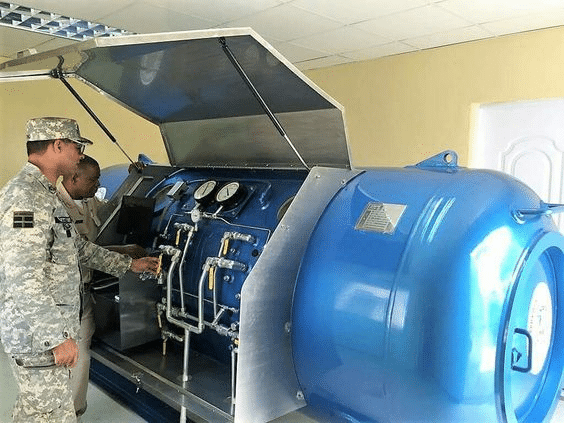
Source: Pinterest
Hyperbaric chambers come in two main types: monoplace and multiplace chambers, each with distinct designs and applications. Monoplace chambers are designed to accommodate a single patient, while multiplace chambers can accommodate multiple individuals.
The structure of hyperbaric chambers typically involves a cylindrical or rectangular shape, constructed using robust materials such as steel or acrylic. The chamber walls are reinforced to withstand the increased pressure inside. Transparent viewing ports are integrated into the design to allow medical staff to monitor patients during treatment.
To ensure safety, hyperbaric chambers are equipped with various features. These include airtight seals, double-locking doors, and reinforced windows to withstand pressure. Ventilation systems are installed to control temperature and humidity within the chamber. Communication systems enable patients to stay in contact with medical staff outside the chamber. Additionally, emergency backup systems and fire suppression mechanisms are implemented as precautionary measures.
The design and components of hyperbaric chambers prioritize patient safety, comfort, and effective delivery of hyperbaric oxygen therapy. Advancements in chamber technology continue to enhance these aspects, promoting the wider use and accessibility of hyperbaric oxygen therapy for various medical conditions.
The Process of Hyperbaric Oxygen Therapy (HBOT)

Source: Pinterest
Hyperbaric oxygen therapy (HBOT) involves a systematic process to ensure safe and effective treatment for patients. The therapy typically follows the following steps:
- Patient Preparation: Before entering the hyperbaric chamber, patients are educated about the procedure and safety guidelines. They may be asked to change into suitable clothing and remove any items that could pose a risk within the chamber.
- Entering the Chamber: Once prepared, the patient enters the hyperbaric chamber. Depending on the type of chamber, they may enter alone (monoplace chamber) or with medical staff (multi-place chamber). The patient lies down or sits comfortably, ensuring proper positioning for the treatment.
- Pressurization and Compression: The chamber is sealed, and the process of pressurization begins. The pressure gradually increases to the prescribed level, following a specific protocol.
- Monitoring and Adjusting Pressure: Throughout the treatment, medical staff closely monitor the patient’s vital signs and ensure their comfort. They also make necessary adjustments to maintain the prescribed pressure and address any concerns or discomfort experienced by the patient.
- Decompression and Exiting the Chamber: After the designated treatment time, the decompression phase begins. The pressure inside the chamber gradually decreases to ambient levels. Once the pressure is normalized, the chamber is opened, and the patient can safely exit.
Mechanisms of Action in Hyperbaric Chambers
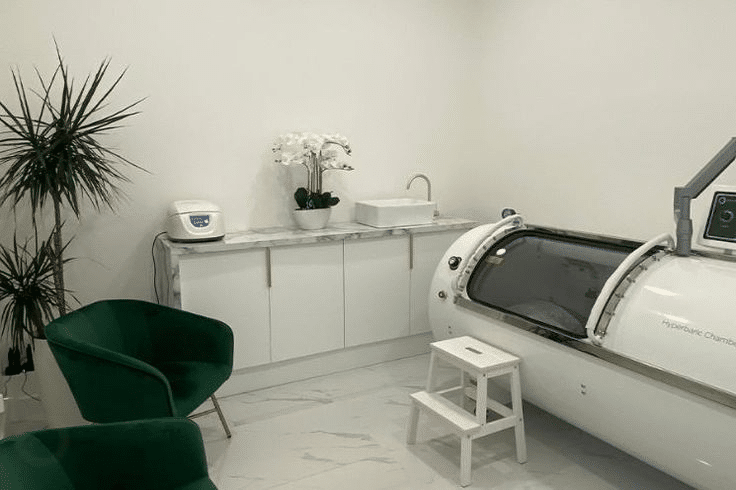
Source: Pinterest
Hyperbaric chambers exert their therapeutic effects through various mechanisms of action, facilitating healing and recovery in patients.The mechanisms underlying hyperbaric oxygen therapy (HBOT) encompass the following:
- Augmented Oxygen Dissolution in Blood and Tissues: The heightened atmospheric pressure within the hyperbaric chamber facilitates the greater dissolution of oxygen in the bloodstream. This substantial increase in the oxygen-carrying capacity of red blood cells enables improved oxygen delivery to tissues throughout the body.
- Enhanced Oxygen Supply to Oxygen-Deprived Regions: HBOT fosters the diffusion of oxygen into areas where blood flow is compromised or tissues are damaged. Elevated oxygen levels aid in surmounting oxygen deprivation, bolstering cellular survival and metabolic function in these regions. This proves particularly advantageous for wounds or ischemic tissues grappling with insufficient oxygen supply.
- Neovascularization and Angiogenesis: Hyperbaric oxygen stimulates the formation of fresh blood vessels (neovascularization) and the growth of small capillaries (angiogenesis). These processes amplify blood flow to damaged or healing tissues, facilitating superior oxygen and nutrient provision. Neovascularization and angiogenesis contribute to wound healing, tissue regeneration, and the recovery of ischemic tissues.
- Diminished Inflammation and Edema: Hyperbaric chambers assist in mitigating inflammation and reducing edema (swelling) associated with various conditions. The therapy influences the release of anti-inflammatory mediators, suppresses pro-inflammatory cytokines, and enhances tissue oxygenation. These effects alleviate inflammation and edema, fostering a more favorable environment for healing.
- Stimulation of Cellular Repair and Regeneration: HBOT triggers cellular responses that facilitate repair and regeneration processes. It prompts the release of growth factors and stem cells, which aid in tissue remodeling, collagen synthesis, and wound closure. Additionally, the therapy enhances cellular metabolism and DNA synthesis, supporting the regeneration of damaged tissues.
Applications of Hyperbaric Chambers
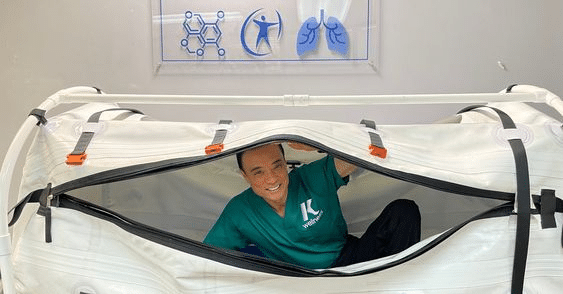
Source: Pinterest
Wound Healing and Tissue Repair: Hyperbaric chambers support the healing process of chronic non-healing wounds like diabetic foot ulcers, arterial ulcers, and pressure sores. The elevated oxygen levels within the chamber enhance cellular function, collagen synthesis, and angiogenesis, promoting wound healing.
Carbon Monoxide Poisoning and Gas Embolism: HBOT effectively addresses carbon monoxide poisoning by swiftly eliminating the toxic gas from the bloodstream, preventing its detrimental effects. It also aids in the dissolution of gas bubbles, treating conditions such as gas embolism resulting from diving accidents or surgical procedures.
Radiation Therapy Side Effects: Hyperbaric chambers help manage tissue damage and side effects induced by radiation therapy. HBOT reduces inflammation, facilitates tissue repair, and improves oxygenation, facilitating the healing of radiation wounds, osteoradionecrosis, and radiation cystitis.
Neurological Disorders and Traumatic Brain Injury: HBOT shows promise in treating neurological conditions like cerebral palsy, multiple sclerosis, and stroke. By increasing oxygen delivery to the brain, reducing brain edema, and promoting neuroplasticity, hyperbaric chambers have the potential to improve neurological function and alleviate symptoms.
Sports Performance and Recovery: Athletes utilize hyperbaric chambers to optimize performance, expedite recovery, and address sports-related injuries. The augmented oxygen availability within the chamber aids in tissue repair, diminishes inflammation, and accelerates recovery from physical exertion.
Risks, Limitations, and Considerations
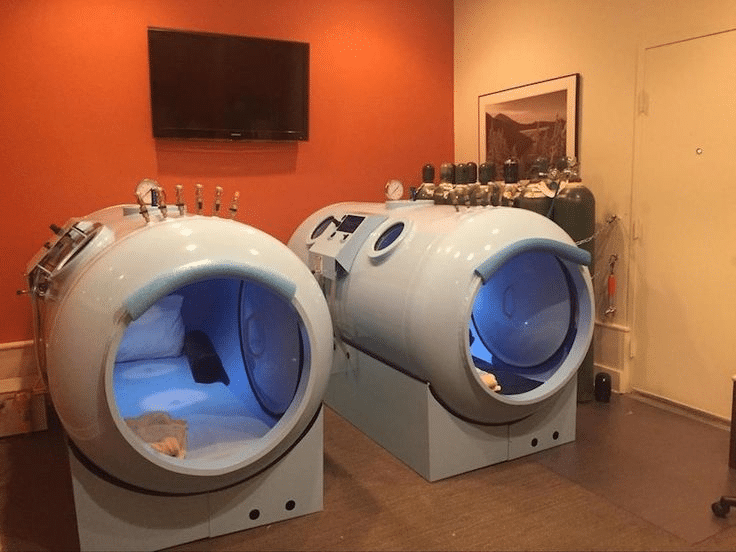
Source: Pinterest
When contemplating hyperbaric oxygen treatment (HBOT), there are a few potential adverse effects and concerns to bear in mind. While uncommon, they include barotrauma (ear or sinus damage caused by pressure shifts), transient myopia (near-sightedness), oxygen toxicity (excessive oxygen exposure), and claustrophobia. However, with sufficient care and medical supervision, these side effects may typically be reduced or prevented entirely.
It should be noted that HBOT may not be appropriate for everyone. Untreated pneumothorax (collapsed lung), severe congestive heart failure, certain lung illnesses, and some drugs are also contraindications. Individuals who have had seizures or ear operations in the past should also take care. A consultation with a healthcare expert is required to establish whether HBOT is appropriate and safe.
Expert guidance and medical supervision are crucial when undergoing HBOT. Qualified medical professionals can evaluate an individual’s medical history, conduct necessary assessments, and develop an appropriate treatment plan. Medical supervision ensures the safety and effectiveness of the therapy, allowing for adjustments as needed to optimize the patient’s response and progress.
Conclusion
The treatment within a hyperbaric chamber involves the administration of elevated-pressure oxygen to patients, facilitating heightened oxygen levels in their bodily tissues.
Hyperbaric Oxygen Therapy (HBOT) possesses substantial significance and potential across various medical conditions. It possesses the ability to augment the body’s innate healing mechanisms and foster the regeneration of tissues. Though infrequent, potential adverse effects like barotrauma and oxygen toxicity can be mitigated by adhering to proper precautions and operating under the watchful eye of medical professionals.
The suitability of HBOT necessitates an individualized assessment that considers contraindications and pertinent medical history. The provision of medical guidance throughout the therapeutic course safeguards its safety and efficacy.

